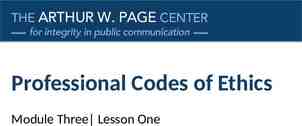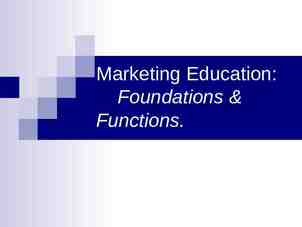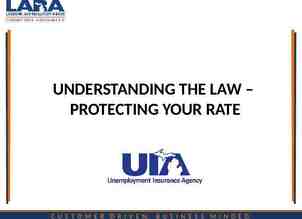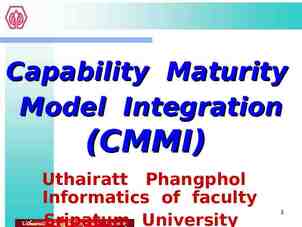Going Hybrid While Quelling the Disbelievers: QM to the Rescue!
21 Slides5.40 MB
Going Hybrid While Quelling the Disbelievers: QM to the Rescue! Presentation at the Quality Matters Regional Conference Denver, CO April 13, 2018 Chris Street, PhD Professor of Secondary Education California State University, Fullerton Lori Campbell ERWC Online Teacher Kern High School District
Expository Reading and Writing Curriculum
A Few Facts about the ERWC The ERWC has been around since 2004. ERWC developed through a unique partnership between university faculty and high school teachers Across California, more than 14,000 educators have been through ERWC professional development seminars. 951 California high schools have adopted the ERWC as a full, 12th grade course. Many other middle and high schools are integrating some ERWC modules into existing classes. The ERWC is also being taught in Hawaii—and it is expanding into Washington State.
What is ERWC? The ERWC (Expository Reading and Writing Course) is a college preparatory, rhetoric-based English language arts course for grade 12 designed to develop academic literacy (advanced proficiency in rhetorical and analytical reading, writing, and thinking).
The 12th Grade Course Approved by the University of California and the CSU as a year-long college-preparatory English course in 2006 [satisfying the “b” English requirement in the “a-g” sequence] Curriculum is aligned with the Common Core State Standards. Curriculum prepares students for college-level reading, writing, and thinking tasks. The ERWC course can also exempt future CSU students from needing to take remedial college courses.
What is ERWC? The ERWC also offers curriculum for grades 7-11, with four extended modules per grade level.
7
ERWC Compliments Common Core ERWC Key Principles 1. The integration of interactive reading and writing processes; 2. A rhetorical approach that fosters critical thinking and engagement through a relentless focus on the text; 3. Materials and themes that engage student interest; 4. Classroom activities designed to model and foster successful practices of fluent readers and writers; 5. Research-based methodologies with a consistent relationship between theory and practice; 6. Built-in flexibility to allow teachers to respond to varied students' needs and instructional contexts; and 7. Alignment with California’s Common Core State Standards for English Language Arts and Literacy. 7 Common Core ELA Capacities Demonstrate independence Build strong content knowledge Respond to audience, task, purpose, and discipline Comprehend and critique Value evidence Use technology and digital media Understand other perspectives and cultures
CA CCSS for ELA/Literacy in Left Margin Assignment Template Teacher Version: Good Food/Bad Food 9
ERWC Module Incubator is LIVE! And more modules will be coming soon!
Getting Access to the ERWC Curriculum To be considered “certified” to teach the curriculum, educators need to complete a required professional learning experience (MS, 18 hrs; HS, 24 hrs). Middle school and high school workshops are scheduled locally, as well as statewide. 11
ERWC Is Expanding and Evolving The Investing in Innovation Validation grant The National Professional Development Grant 13.2 million over 5 years 2.75 million over 5 years Expand the course beyond California into Washington State ERWC modules will be revised to include integrated and designated English language development (ELD) and provide related professional learning for high school English language arts and ELD teachers. 12 Revise the curriculum to include grade 11 as well as grade 12
ERWC Is Moving Online Technology-Enhanced Hybrid: Brick and Brick and Mortar Mortar classroom Computer Direct instruction Lab and activities online. Teacher is present Fully Online Delivery No classroom Students meet with teacher at district site or virtually for seminars or assistance periodically throughout semester. Online discussion boards 13
The Need for Quality Matters! To be considered “certified” to teach the curriculum, educators need to complete a required professional learning experience (MS, 18 hrs; HS, 24 hrs). Right now, we have no professional development or standards for teachers using ERWC is digital settings. Middle school and high school workshops are scheduled locally, as well as statewide. 14
Lori Campbell 28th year 3 years classroom ERWC 3rd year online blended www.kernlearn.org Blended learning model that combines online learning and face-to-face education Uses internet-based learning management system as a digital classroom environment to teach courses for KHSD credit. Offers increased access to standardsbased courses taught by highly qualified staff. The use of digital curriculum enables flexible scheduling options for students. Students may take Kern Learn courses to supplement their traditional schedule, or may enroll as a full-time online student.
Rear Admiral Grace Hopper “It's easier to ask forgiveness than it is to get permission.”
On-line ERWC HYBRID As of this date, there is NO approved online ERWC course. There may never be an approved online ERWC course.
What Hybrid ERWC Needs: Students MUST be able to interact, discuss, and respond to each other’s feedback. The teacher MUST be an available resource either through phone, message, or Google Hangouts. Sitting right beside you is the best method. This is known as “HYBRID” or “Blended.” In short, interaction is a vital component of the course, and that needs to be highlighted in hybrid and online settings.
QM Rubric can act as a guide for Side-by-side standards comparison between ERWC requirements and online program design. Program fidelity Ability to see multiple formats of delivery for common curriculum (discussion boards, recorded seminars, and teacher interaction). Smooth transition from high school to college courses.
Questions for our audience to consider All Cal State University campuses have access to QM resources, but our high schools are not affiliated with QM. Can they work under the umbrella of the CSU? Are there other HS/University models out there similar to ours that we might consider? If we develop a course for adoption, what platform (LMS) is best, since not all schools use the same ones. What QM professional learning would be most appropriate for the high school teachers who will be teaching in digital settings?
To Learn More . ERWC ERWC http://www.calstate.edu /eap/englishcourse/ If you have any questions, please contact: Chris Street [email protected] or Lori Campbell Lori [email protected]







